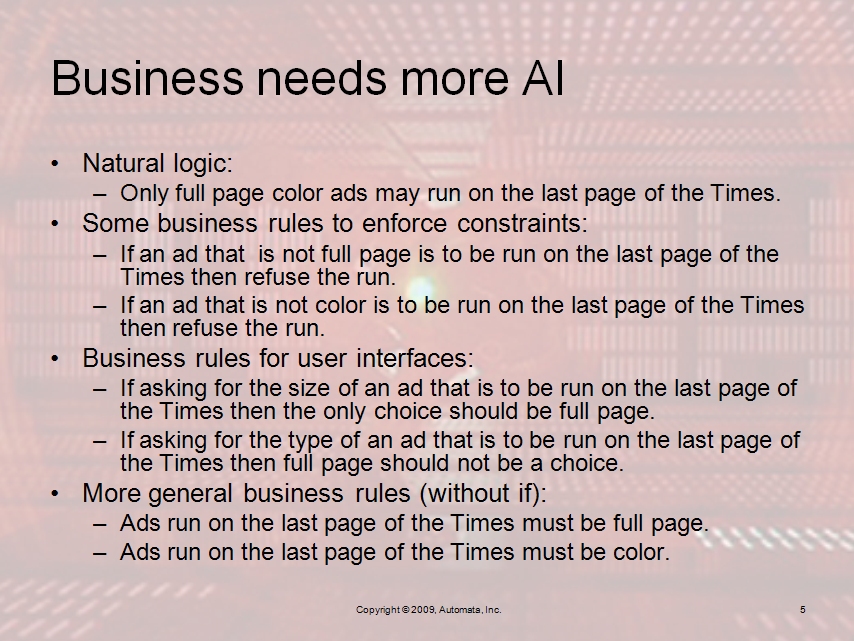The slides for my Business Rules Forum presentation on event semantics and focusing on events in order to simplify process definition and to facilitate more robust governance and compliance are at Event-centric BPM.
After the talk I spoke with Jan Verbeek and Gartjan Grijzen of Be Informed and reviewed their software, which is excellent. They have been quite successful with various government agencies in applying the event-centric methodology to produce goal-driven processing. Their approach is elegant and effective. It clearly demonstrates the merits of an event-centric approach and the power that emerges from understanding event-dependencies. Also, it is very semantic, ontological, and logic-programming oriented in its approach (e.g., they use OWL and a backward-chaining inference engine).
They do not have the top-down knowledge management approach that I advocate nor do they provide the logical verification of governing policies and compliance (i.e., using theorem provers) that I mention in the talk (see Guido Governatori‘s 2010 publications and Travis Breaux‘s research at CMU, for example) but theirs is the best commercially deployed work in separating business process description from procedural implementation that comes to mind. (Note that Ed Barkmeyer of NIST reports some use of SBVR descriptions of manufacturing processes with theorem provers. Some in automotive and aerospace industries have been interested in this approach for quality purposes, too.)
BeInformed is now expanding into the United States with the assistance of Mills Davis and others. Their software is definitely worth consideration and, in my opinion, is more elegant and effective than the generic BPMN approach.

